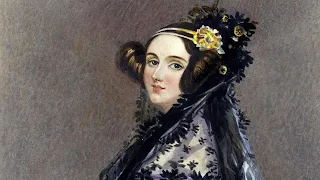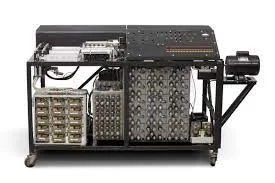ABACUS:
1) The abacus was invented in Babylonia in 2400 B.C.
2) The modern form of Abacus was first used in China in around 500 B.C.
Calculating device.
4) It performs basic mathematical operations like addition,
subtraction.
5) It is also called a Counting Frame.
6) It is separated in two portions by Mid-bar.
7) Upper Portion of Abacus is known as Heaven and Lower portion is known as Earth.
8) There are two bids in each rods of Heaven portion and 5 bids in Earth portion.
9) The value of per bead in Heaven is 5 and Earth is 1.
Napier's Bone:
1) Napier's Bone was invented in 1617 A.D.
2) It was invented by Scottish Mathematician John Napier.
3) It is a set of rods made by woods or bones.
multiplication, division, square root, cube root etc.
5) There are 10 bones corresponding to the digits 0-9, and a special eleventh bone that is used to represent the multiplier.
6) Logarithm was also introduced by John Napier in 1614 A.D.
Slide Rule:
1) Slide rule was invented by William Oughtred
in 1620 A.D.
2) It is based on Napier's Idea about Logarithm.
3) It is used for multiplication, division, Exponents, roots,
logarithms, trigonometry etc.
4) It consists of two sets of rulers joined together with a marginal space between them.
Pascaline:
1) Pascaline was invented by French Mathematician Blaise Pascal in 1642 A.D.
2) At the age of 19, Blaise Pascal invented, an adding calculator to help his father in his tax collection job.
3) It is also called Arithmetic Machine.
4) It is often considered to be the first mechanical adding machine
Stepped Reckoner:
1) Stepped Reckoner was invented by German Mathematician Gottfried Wilhelm von Leibniz in 1674 A.D.
2) It performs all basic mathematician operations i.e. addition,
subtraction, division, multiplication.
3) Expanded on the French mathematician-philosopher Blaise Pascal's ideas and did multiplication by repeated addition and shifting.
Jacquard's Loom:
1) Jacquard's Loom was invented by French inventor Joseph-Marie Jacquard in 1801 A.D.
2) It is an automatic weaving machine.
3) It used punched cards to produce certain pattern in the woven clothe.
5) The concept of this device gave the idea of Binary Digits, 0 or 1 (Yes or No).
Difference Engine & Analytical Engine:
1) Both devices were invented by Charles Babbage.
2) Difference engine was invented in 1822 A.D.
3) He is also considered as father of computer due to his idea and concept about it.
4) Difference Engine that could add and
subtract to produce output tables for given functions; a single algorithm is run using finite
differences with polynomials.
5) It was to be powered by steam, would contain a stored
program, and would print the results
6) It was an automatic mechanical calculator designed to tabulate polynomial functions
8) The analytical engine is a key step in the formation of the
modern computer.
9) Because of
legal, political and monetary issues the machine was never built.
10) The Analytical Engine was to be a general-purpose, fully program-controlled, automatic mechanical digital computer that could solve any mathematical problem.
11) It is stilled found in the Science Museum, London.
12) Babbage concept led to develop a first mechanical computer MARK-I in the year 1997 A.D.
Lady Augusta Ada Lovelace:
1) Lady Augusta Ada Lovelace was the first computer Programmer.
2) She helped Babbage to write programs for his Analytical Engine in 1848 A.D.
Alan Turing:
1) Charles Babbage laid the foundations of Computer Science, but
it was Alan Turing of England who is regarded as the “Father of
Computer Science”
2) He provided a new concept of both algorithms and the process of
calculations with the invention of his Turing Machine.
Tabulating Machine:
1) Tabulating Machine was invented by Herman Hollerith in 1887 A.D.
2) It was used to tabulate U.S. Census record in 1890 A.D.
3) It was the first machine to use the practical use of Punch Card in data processing.
5) In 1924 A.D., It merged with other two companies and formed International Business Machine (IBM) that is the largest computers manufacturing company.
Mark-I:
1) Mark-I was developed by Howard Aiken in 1937 A.D.
2) Mark-I was an automatic calculating Device.
4) It was the first electro mechanical computer.
5) One of the first programs to run on the Mark I was initiated on 29 March 1944 by John von Neumann.
Atanasoff Berry Computer (ABC):
1) ABC was invented in 1993 by Professor John Vincent Atanasoff and graduate student Cliff Berry at Lowa State Collage.
3) It is considered the first electronic digital computer.
ENIAC:
1) ENIAC refers to Electronic Numerical Integrated and Calculator.
3) It was the first electronic computer used for general purpose.
EDVAC:
1) EDVAC refers to Electronic Discrete Variable Automatic Computer.
2) It was invented by John Presper Eckert and John Mauchly in 1944 A.D.
3) EDVAC was a binary serial computer with automatic addition, subtraction, multiplication, programmed division and automatic checking with an ultrasonic serial memory capacity of 1,000 34-bit words.
4) It used the stored program concept that was designed by John Von Neumann.
EDSAC:
1) EDSAC refers to Electronic Delay Storage Automatic Calculator.
2) It was invented by Maurice Wilkes in 1949 A.D.
4) It was the computer that run the first graphical computer game nicknamed 'Baby'.
UNIVAC-I:
1) UNIVAC-I refers to Universal Computer.
2) It was invented by John Presper Eckert and John Mauchly in 1951 A.D.
To Be Continued...........
* Comment Your Feedback If You want to Add something...........


















